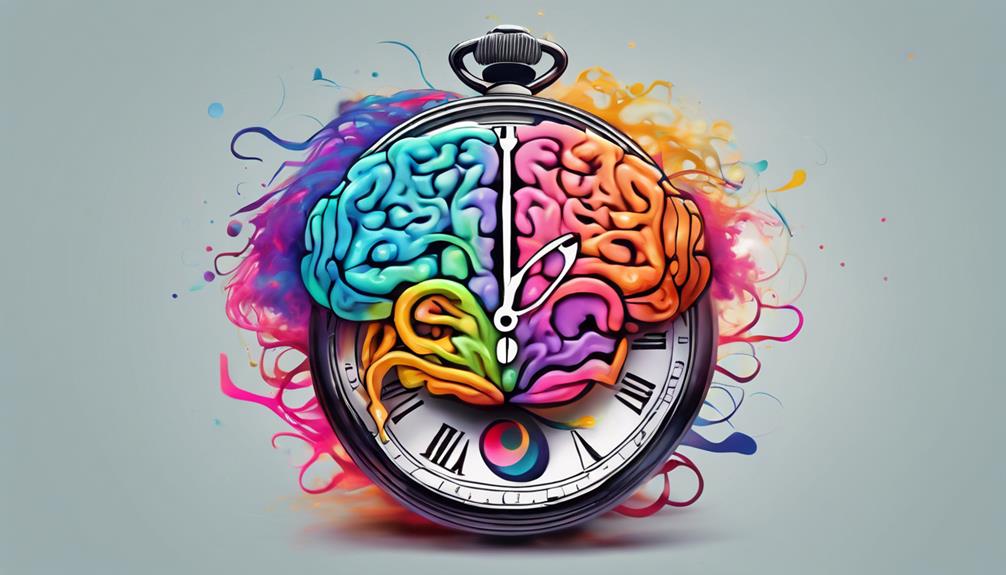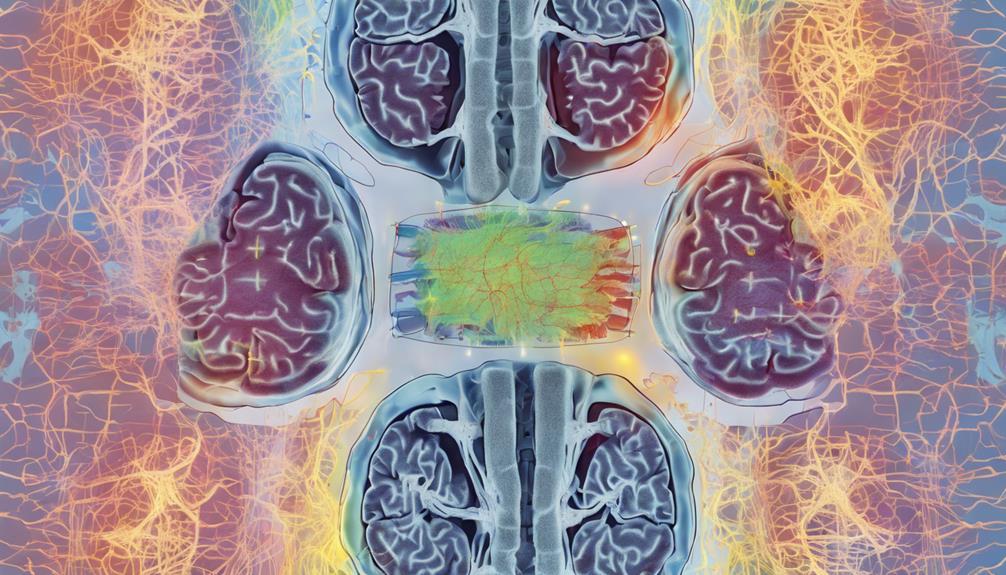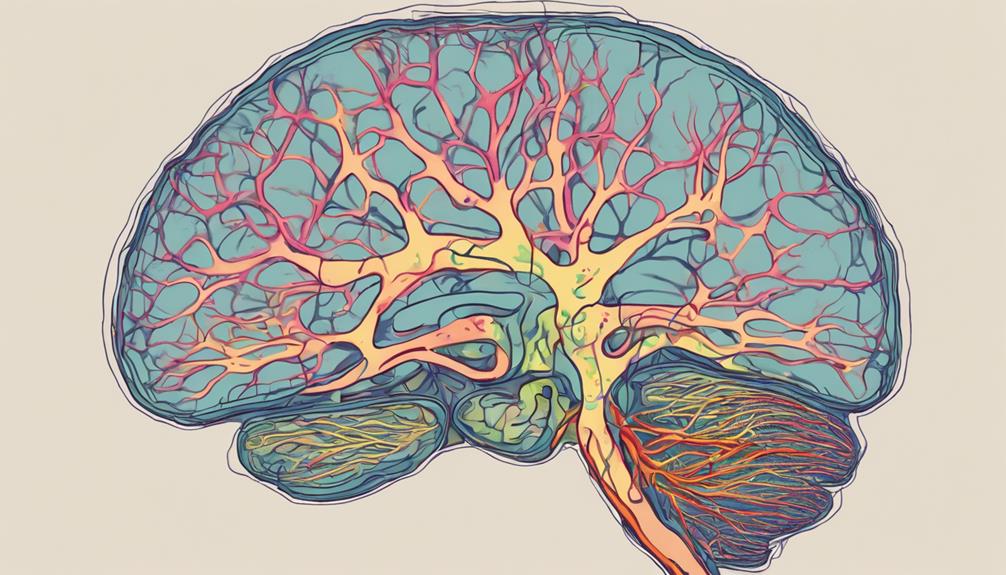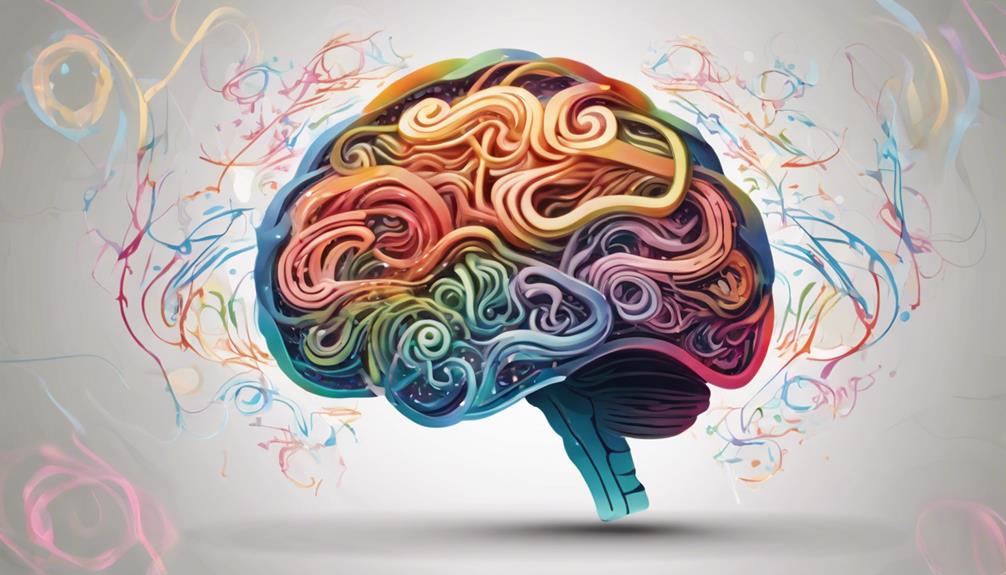Understanding the relationship between hypnotic suggestions and brain responses uncovers the impact of suggestibility levels on neural pathways and specific brain regions. This correlation highlights the intricate interplay between conscious and subconscious processes, revealing the profound influence of cognitive mechanisms and attentional focus on cognitive responses to suggestions. Delving deeper into unconscious processing in hypnosis provides an in-depth exploration of how hypnotic cues interact with the brain's neural network to induce therapeutic changes in thought patterns, behaviors, and emotions. Explore further to uncover the complexities of mastering hypnotic suggestions and their effects on brain responses.
Understanding Hypnotic Suggestions

To grasp the concept of hypnotic suggestions, one must delve into the intricate relationship between the subconscious mind and external influences. Suggestibility levels play a crucial role in determining an individual's susceptibility to hypnotic suggestions. These levels are influenced by various cognitive mechanisms, including attention, perception, and memory processes. Individuals with higher suggestibility levels tend to respond more strongly to hypnotic cues due to differences in their cognitive processing.
Language patterns are a fundamental tool in inducing hypnotic effects. Through the use of specific linguistic structures and suggestions, hypnotists can guide individuals into altered states of consciousness where their subconscious mind becomes more open to receiving and acting upon suggestions. By carefully selecting words and phrases, hypnotists can shape the individual's thoughts and behaviors, leading to desired outcomes.
Understanding the intricate interplay between suggestibility levels, cognitive mechanisms, language patterns, and hypnotic effects is essential for mastering the art of hypnotic suggestions. This knowledge forms the foundation for effectively influencing the subconscious mind and eliciting the desired responses in individuals undergoing hypnosis.
Impact on Neural Pathways
The utilization of hypnotic suggestions has been found to have a significant impact on neural pathways, influencing cognitive processes and behavioral responses in individuals. This influence is closely tied to the concept of neural plasticity, which refers to the brain's ability to reorganize itself by forming new neural connections throughout life.
During a hypnotic trance, the brain enters a state where suggestions can bypass critical faculties and directly target subconscious processes, leading to alterations in perception, behavior, and even physiological responses.
Research suggests that repeated exposure to hypnotic suggestions can enhance neural plasticity by strengthening existing neural pathways or creating new ones. This phenomenon may explain why individuals who frequently undergo hypnosis tend to be more receptive to suggestions over time.
Furthermore, the impact of hypnotic suggestions on neural pathways can extend beyond the hypnotic trance itself, potentially influencing long-term cognitive functions and behavioral patterns. Understanding these neural mechanisms is crucial for mastering the art of utilizing hypnotic suggestions effectively.
Brain Regions During Hypnosis

Studies examining brain activity during hypnosis have identified specific brain regions that exhibit altered functioning in response to hypnotic suggestions. Brain imaging techniques such as functional magnetic resonance imaging (fMRI) and positron emission tomography (PET) have been instrumental in revealing these neural mechanisms. Key brain regions involved in hypnosis include the prefrontal cortex, anterior cingulate cortex, and insula.
During hypnosis, neural connectivity within and between these regions is notably influenced, indicating changes in information processing and cognitive control. The prefrontal cortex, responsible for decision-making and attention, shows decreased activity during hypnosis, suggesting a state of focused attention and reduced self-awareness.
The anterior cingulate cortex, involved in emotional regulation and error detection, displays altered connectivity patterns, potentially explaining the heightened suggestibility experienced during hypnosis. The insula, associated with body awareness and self-perception, also exhibits changes in neural connectivity, highlighting the mind-body connection inherent in hypnotic experiences.
Cognitive Responses to Suggestions
What cognitive processes underlie individuals' responses to hypnotic suggestions? When considering cognitive responses to suggestions, it is essential to delve into the intricate mechanisms of cognitive processing and the psychological effects they entail.
Suggestibility plays a crucial role in shaping how individuals respond to hypnotic suggestions. Those who are highly suggestible are more likely to experience profound effects from these suggestions, indicating a link between suggestibility and cognitive responsiveness.
Moreover, attentional focus is another key aspect influencing cognitive responses to hypnotic suggestions. By directing attention towards specific cues or instructions provided during hypnosis, individuals can enhance the effectiveness of the suggestions received. This heightened attentional focus can amplify the psychological effects of the suggestions, leading to more pronounced cognitive responses.
Understanding the interplay between cognitive processing, suggestibility, and attentional focus provides valuable insights into how individuals process and respond to hypnotic suggestions. By elucidating these cognitive mechanisms, researchers can further refine hypnotic techniques to optimize their effectiveness in various contexts.
Neuroplasticity and Hypnosis

Neuroplasticity's role in the context of hypnosis involves the brain's remarkable capacity to reorganize and adapt in response to hypnotic suggestions. Neuroplasticity research has shown that the brain is not static but rather highly adaptable, capable of forming new neural connections and reorganizing existing ones based on experiences and external stimuli, such as hypnotic suggestions.
Therapeutic applications of hypnosis leverage neuroplasticity to induce positive changes in thought patterns, behaviors, and emotions. Studies have demonstrated that hypnosis can enhance neuroplasticity by facilitating the creation of new neural pathways that support desired changes in an individual's mindset or habits.
Unconscious Processing in Hypnosis
The intricate interplay between the unconscious mind and hypnotic suggestions lies at the core of exploring the depths of hypnotic phenomena. In hypnosis, the subconscious influence is a key element that shapes individuals' responses to suggestions. Research suggests that during hypnosis, there is a heightened susceptibility to subconscious influences, allowing for a deeper level of cognitive processing.
Studies utilizing neuroimaging techniques have shown that hypnotic suggestions can lead to distinct patterns of brain activity, indicating that cognitive processing during hypnosis differs from normal waking consciousness. The unconscious mind appears more receptive to subtle cues and indirect suggestions, bypassing critical evaluation processes often present in waking states.
Furthermore, the integration of subconscious influences in hypnotic suggestions can lead to alterations in perception, memory, and behavior. By understanding the mechanisms underlying unconscious processing in hypnosis, practitioners can tailor suggestions more effectively, enhancing the therapeutic benefits of hypnotherapy.
Frequently Asked Questions
Can Hypnotic Suggestions Cure Physical Ailments?
Exploring the potential of hypnotic suggestions to alleviate physical ailments delves into the intricate interplay of the placebo effect and the mind-body connection. Medical research increasingly considers alternative therapies like hypnosis in holistic treatment approaches.
Are There Age Restrictions for Hypnosis?
Hypnosis may have age restrictions due to ethical considerations, legal implications, and developmental differences. Psychological impact on children and adolescents should be carefully assessed. Adhering to professional guidelines ensures safe and effective practice.
How Long Do the Effects of Hypnotic Suggestions Last?
The duration of hypnotic suggestions' effects can vary based on individual factors. To enhance long-term impact, incorporating maintenance strategies and reinforcement techniques, such as self-hypnosis practices or periodic sessions, can help solidify psychological benefits.
Can Hypnosis Be Used for Self-Improvement?
Hypnosis is a tool that can be effectively utilized for personal growth and mental wellness. Through guided suggestions and focused attention, individuals can tap into their subconscious mind to address various areas of self-improvement and enhance overall well-being.
Is It Possible to Resist Hypnotic Suggestions?
While ethical implications of resisting hypnotic suggestions are significant, psychological resistance can occur due to cultural beliefs or individual skepticism. Scientific evidence suggests that resistance varies among individuals, highlighting the complexity of hypnotic responses.
Conclusion
In conclusion, the study of hypnotic suggestions reveals a complex interplay between cognitive responses, neural pathways, and brain regions.
The impact of hypnosis on neuroplasticity and unconscious processing underscores the potential for therapeutic applications.
Understanding the mechanisms behind hypnotic suggestions can provide insights into how the brain responds to suggestion and may inform future research on cognitive processes and behavior modification.


